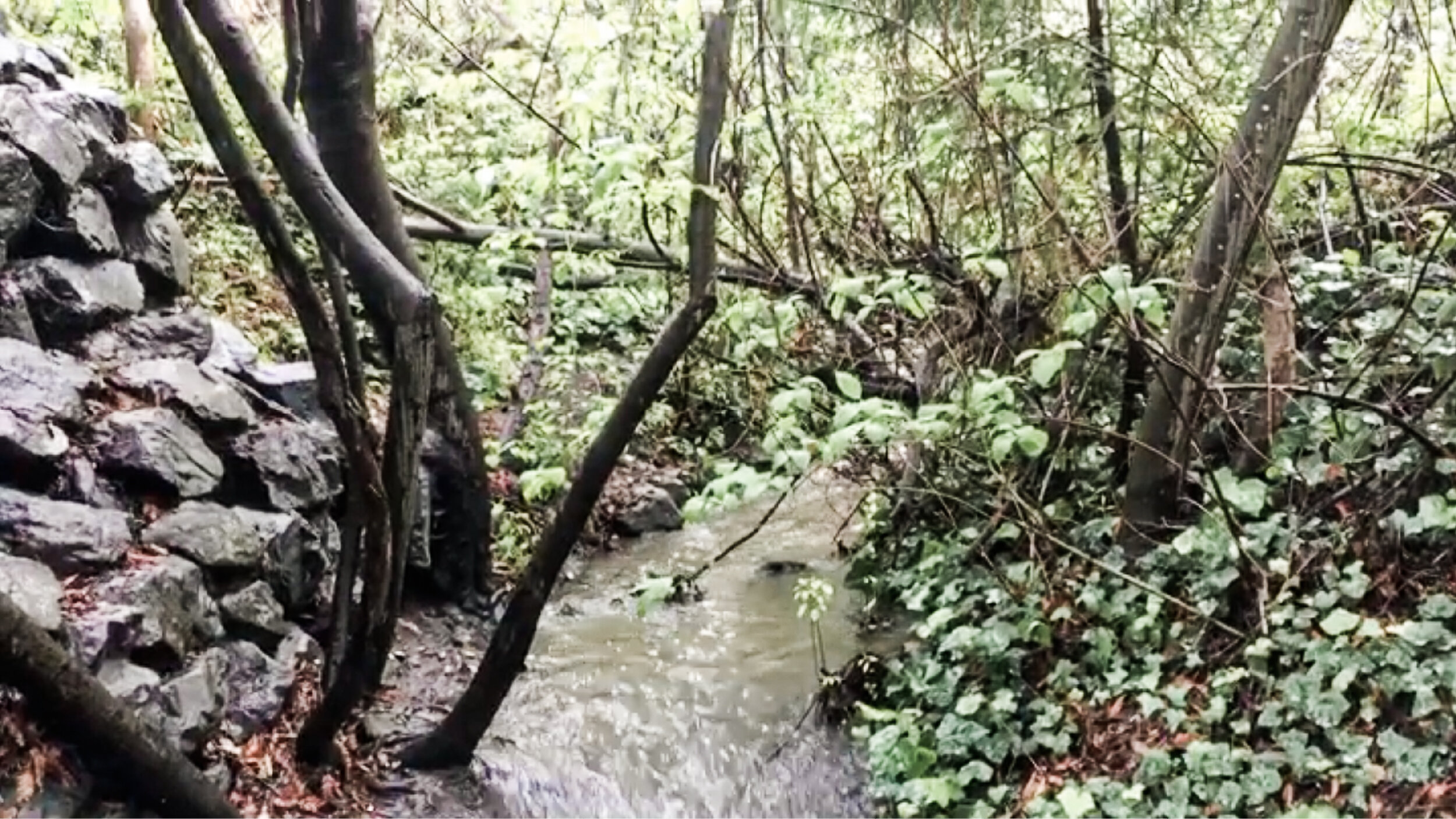Blackberry Creek
Location: Berkeley, CA
Length: 240 feet
Cost: $146,000
Year: 1995
Blackberry Creek is among the first stream daylighting projects. It proved efforts could be safe, even in school grounds. It helped a conservation corps become a breeding ground for local talent, and showed pollution issues better addressed in aboveground channels.
Blackberry Creek was buried through the Thousand Oaks Elementary School in the 1960s. As a result, the area was prone to frequent flooding. [01] A 1989 earthquake led to a $158-million bond for structural upgrades to schools across Berkeley, CA. Mimi Roberts, a mother active in the parent-teachers’ association, proposed Blackberry Creek be uncovered through Thousand Oaks’ play area, as part of the bond. The Berkeley Unified School District and parent-teachers’ association received funding for the stream daylighting in 1992 [02].
The asphalt lot and deteriorating play area was replaced with Blackberry Creek in 1995. Banks were graded and the 240-foot channel was planted with stakes of willow, ninebark, and dogwood. Ten-year post-project observations show the creek has not flooded, despite a one-in-ten-year storm event [01]. Safety concerns arisen during planning have dissipated.
“The Blackberry Creek daylighting project sent the message that these kinds of projects were safe, even in school grounds, even if the creek was as much as 20 feet below existing ground elevation, and even if the side slopes were steep 2-to-1 and 1-to-1 slopes… There are no reports of injuries or accidents at the creek, which is certainly a safer play environment than the playground it replaced.”
Originally, the stream was to be pumped to the surface and run in a small, engineered channel. However, a similar nearby project in Oakland failed due to high maintenance costs on the pumps [02]. It was decided to fully daylight the creek, remove the culvert, and create a natural stream channel.
The East Bay Conservation Corps, filled with local residents, provided labor for the restoration work. Members gained valuable experience. Thereby, it produced skilled workers, managers, and professionals, advancing careers in watershed management and stream restoration [02].
There was tension. The day construction started, a local Tai Chi group requested their mediation tree—a large redwood—be preserved. The channel was redesigned to accommodate. Community members expected the play area, removed during daylighting, be replaced. When it wasn’t, they raised funds to construct a new one, three years post-construction. Lastly, the community expected to easily see and access the creek. However, vegetation grew dense and sight lines diminished. Outreach educated the community about the importance of dense tree canopy for creek health and stability. Over time, the community came to cherish the creek and tensions alleviated [03].
In 2002, it became evident sewage was polluting the creek. Previously, this sewage was being sent to the San Francisco Bay, unbeknownst to all. The issue was quickly addressed once Thousand Oaks students lobbied local officials [02].
Once the pollution addressed, the creek became an outdoor science classroom. Students learn subject matters from aquatic biology to local politics, becoming stream stewards. The fifth-grade class even did a play on Blackberry Creek and its history. Blackberry Creek is among the first stream daylighting projects, and spawned similar efforts in Berkeley and beyond [03].
Sources
Trice, Daylighting Streams (2016).
Riley, Restoring Neighborhood Streams (2016).
Gerson, Blackberry Creek Daylighting Project, Berkeley: Ten-Year Post-Project Appraisal (2005).






